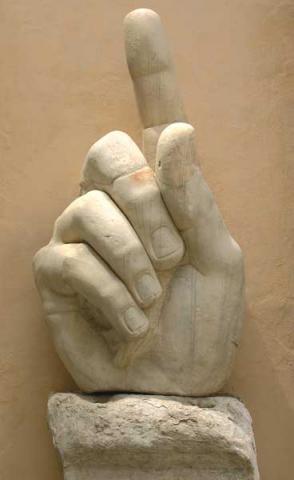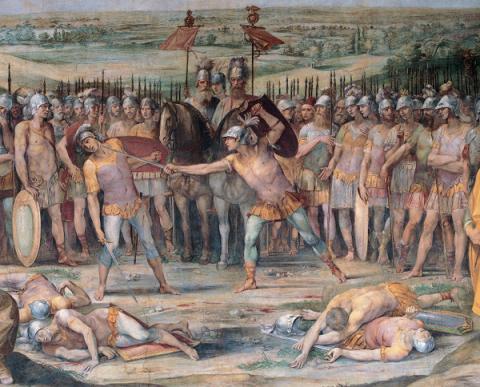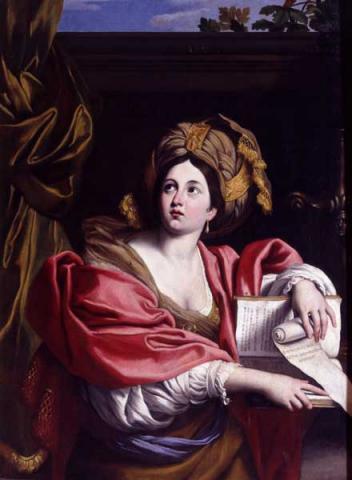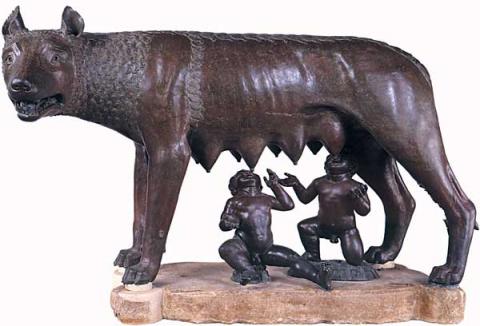The Blessed Angelico

The largest exhibition to be entirely dedicated to “the Blessed Angelico”, as he is often known in Italy, since the monographic staged in the Vatican and Florence in 1955 (part oof the centennial celebrations at the time).
Rounding up the celebrations to mark the 550th anniversary of the death of one of the leading lights of the early Renaissance years in Italy (his work began in Florence in 1417 and ended with his death in Rome in 1455), is this important exhibition dedicated to Friar John of Fiesole - Fra Angelico - organized by the Department for Cultural Policies and Communications for the Superintendency of Fine Arts for the City of Rome, the National Committee for the 550 years since the death of Fra Angelico and Zètema Progetto Cultura. It is the largest exhibition to be entirely dedicated to “the Blessed Angelico”, as he is often known in Italy, since the monographic staged in the Vatican and Florence in 1955 (part oof the centennial celebrations at the time).
“ The Blessed Angelico and the Dawn of the Renaissance” exhibition will include several works being displayed in public for the first time, including the Triptych from the Corsini Gallery in Rome and a panel from the altarpiece in the Bosco ai Frati Convent, both especially restored for the occasion thanks to funding provided by the Committee in charge of the celebrations.
An exhaustive selection of works from major Italian and foreign museums means that this exhibition documents Fra Angelico's long and productive career, from the early days when he was inspired to produceoduce exquisitely elegant pieces in late Gothic style - such as the Tebaide (Life in the Hermitage) and Our Lady of the Cedars on loan from the Uffizi and the Museum of Pisa respectively - through to his last days in Rome by which time his work was characterized by its humanistic, monumental and classical nature, exemplified in the Corsini Gallery Triptych and altarpiece mentioned above. Although the fragility of certain pieces (such as tables or illuminated codices) had to be taken into account, the choice of which works to include followed two fundamental guidelines.
One was that the quality and autographic nature of the pieces ensured a selection that represents the various periods of Fra Angelico's career, amply demonstrated by the paintings that have been included, such as his Paradise from the Uffizi, considered to be an absolute masterpiece, as are the Triptych from Cortona complete with its altarpiece, the luminous polychrome Annunciation from San Giovanni Valdarno and two extraordinary panels from the “ Armadio degli Argenti”, that are amongst the most significant pieces on loan from the Museum of San Marco in Florence.
The other guiding principal was that less well-known pieces also be included, pieces rarely or never before exhibited, so that academics and the general public alike would have an opportunity to admire the different types of work that the artist produced. The various periods of his career and his versatility are, consequently, all documented.
The tables, tabernacles, sections of altarpieces and polyptychs reflect his skills as an artist, the most important codices decorated by Fra Angelico and his collaborators underline his talent as an illuminator and for the first time ever, a section dedicated to his monographic works prove his skills as a draughtsman too. On display here for the first time, the impressive and complex altar step from Zagabria ( St Francis receiving the stigmata and the Martyrdom of St. Peter), the problematic Annunciation from Dresden (reassembled in the 16th century), the exceptional fragment that portrays St. John the Baptist from Leipzig (possibly originally part of the altarpiece from St. Mark's) and a section of the Annalena altarpiece now in Zurich. Amongst those pieces practically unknown are the Imago pietatis on parchment from a private collector in Turin, carried out in Fra Angelica's workshop that has a very interesting history and the two elegant side panels of a triptych, dated to approximately 1430, showing the Blessed and the Damned respectively, now owned by a private collector in the USA, . Amongst the contributions included in the catalogue, the presentation of the results of infra-red tests carried out on a significant number of Fra Angelico's works (some of which are included in the exhibition) has created considerable scientific interest. This research, funded by the National Committee and carried out by the Laboratory of Visual Arts at the Scuola Normale Superiore di Pisa, underlines the quality and finesse of Fra Angelico's drawing skills, confirming that he rarely corrected or amended his work and just how elegant, studied and controlled the “pencil lines” beneath his figures and compositions were.
Skira
Information
Tuesday-Sunday 9.00am-8.00pm - the ticket office closes an hour in advance
Closed Monday, 1st May
Integrated entrance ticket to Capitoline Museums and Exhibitions ordinary euro 9,00 reduced euro 7,00
Only shows tickets ordinary euro 6,00 reduced euro 4,00
Free entry for those set out in the current pricing policy.
Tickets and reservations
Tel. 060608 (every day 9.00am - 9.00pm)
Banche Tesoriere del Comune di Roma: BNL – Gruppo BNP Paribas, Unicredit Banca di Roma, Monte dei Paschi di Siena
Vodafone. Servizi di Vigilanza Travis. Supporto organizzativo Artifex – comunicare con l’arte
Carrier
Toshiba
Insurance Service
Axa Art
La Repubblica
Press Room
Gallery
33810

34352





















































